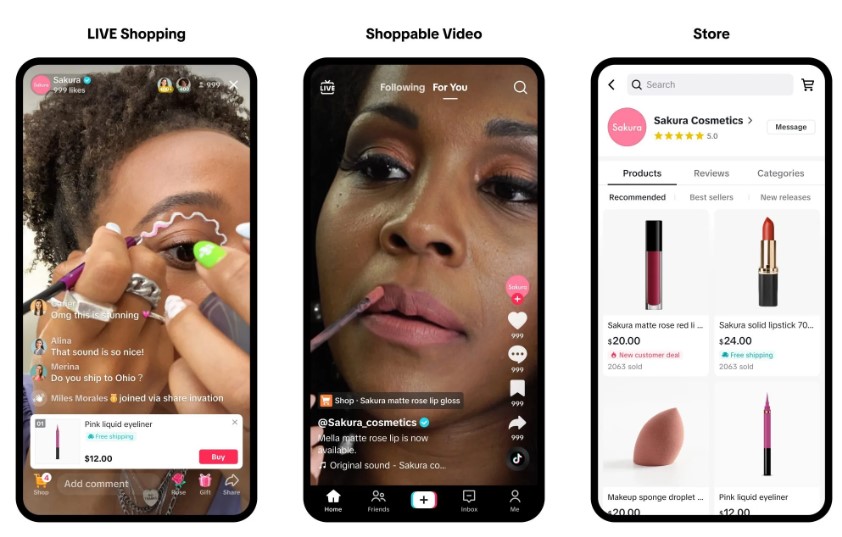9-14 #Headache : TSMC’s chips that will be manufactured in the Arizona fab will have to be sent to Taiwan for packaging; Qualcomm has entered into an agreement with Apple to supply Snapdragon 5G Modem for next 3 years; OPPO may announce a free 4-year battery replacement initiative; etc.

Encouraged by the American government, Taiwan Semiconductor Manufacturing Co (TSMC), is making its first factory in the US. Apple plans to buy chips from the Arizona factory. The plant will kick off production of chips by 2024. But things have not been going smoothly. Even when it is ready, the Arizona factory will reportedly not be able to produce finished chips. The chips that will be manufactured in the US will have to be sent to Taiwan for packaging. Packaging is the final process of chip fabrication and involves putting integrated circuits in a housing. The Arizona facility is apparently not equipped to package advanced chips, such as those used in the iPhone. As SemiAnalysis chief analyst Dylan Patel puts it, the Arizona factory is nothing more than a paperweight. (Apple Insider, The Information, 9to5Mac, Phone Arena, UDN, China Times)
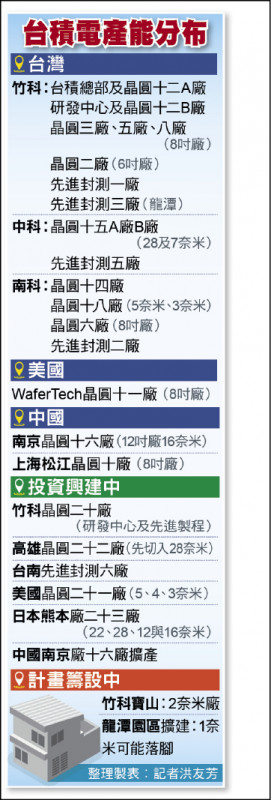
After 5 straight quarters with declining revenue, the semiconductor industry reversed course and increased revenue in 2Q23 according to Omdia. The research noted quarterly revenue grew 3.8% to USD124.3B in this period. This growth is in line with historical patterns for the total semiconductor market, with 2Q23 revenue increasing on average of 3.4% from 1Q23 (using data from 2002 through 2022). However, growth within semiconductor segments continues to diverge from historical trends. For example, the DRAM market was up 15% in 2Q23 with the historical pattern of 7.5% in the second quarter. However, the toll of the shrinking market has reduced the current market considerably, with the semiconductor market by revenue now at 79% of what it was one year ago when total revenue was USD160B in 2Q22. It will take time to return to the revenue levels of late 2021. (Android Headlines, Omdia)
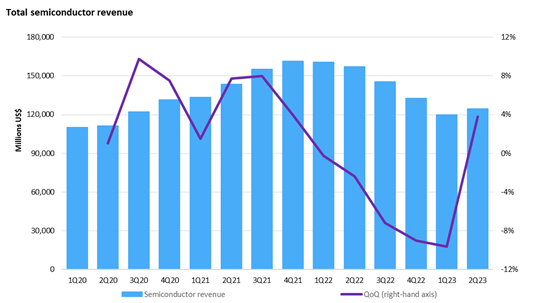
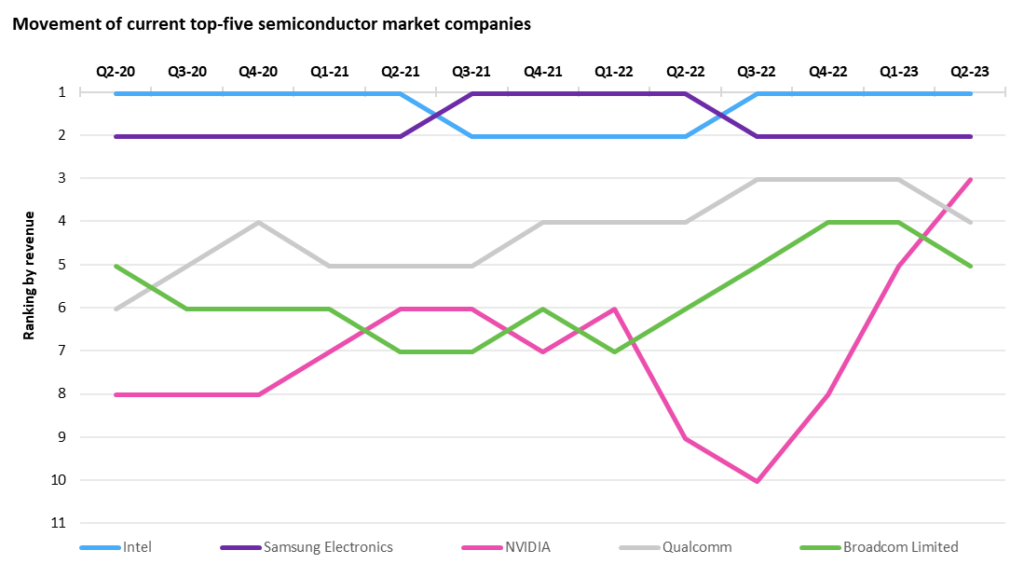
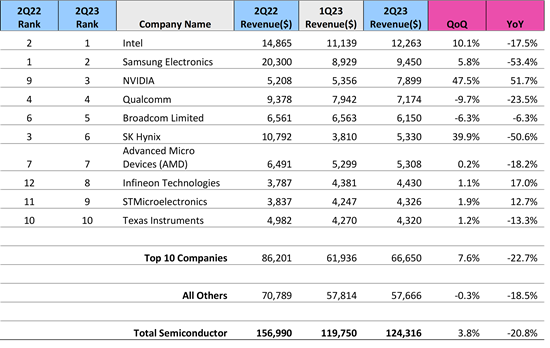
TSMC has reportedly tapped two industry heavyweights to explore silicon photonics. TSMC has assembled a dedicated R&D team of approximately 200 experts, focusing on harnessing silicon photonics’s power for future chips. TSMC is allegedly in talks with major players like Broadcom and Nvidia to co-develop applications centered on the technology. This collaboration aims to produce next-generation chips with silicon photonics, and substantial orders are expected as early as 2H24. (CN Beta, Technode, Tom’s Hardware, WCCFTech, UDN, Asia Nikkei)
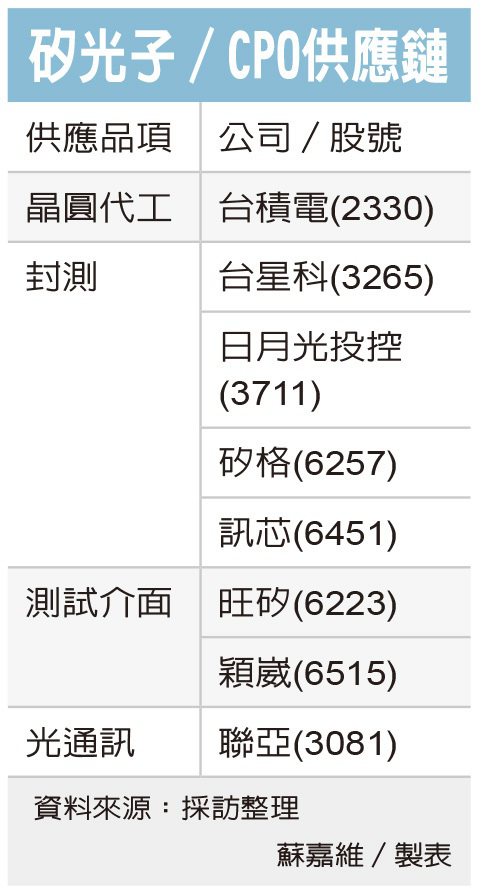
Qualcomm has announced that it has entered into an agreement with Apple to supply Snapdragon 5G Modem‑RF Systems for smartphone launches in 2024, 2025 and 2026. Apple is Qualcomm’s largest customer, accounting for nearly a quarter of revenue, according to data compiled by Bloomberg. Starting with the iPhone 12 generation, the chip has supported speedier 5G networks. (CN Beta, The Verge, Qualcomm, Bloomberg, Yahoo)
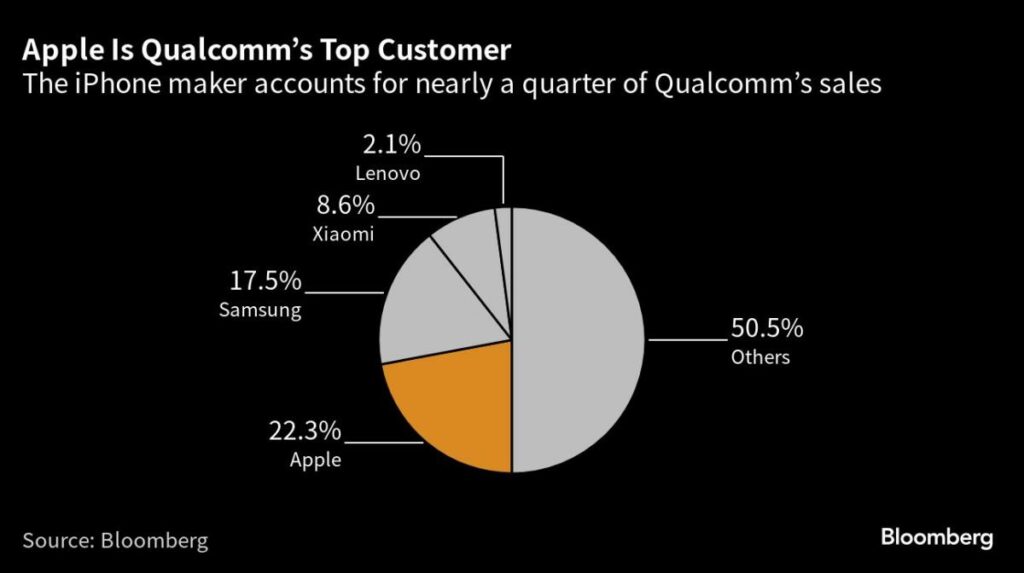
Apple’s iPhone 15 Pro and iPhone 15 Pro Max are getting the first widely available 3nm chip, the A17 Pro. The A17 Pro boasts 19B transistors and a 6-core CPU, with two high-performance cores (which Apple calls the “faster mobile CPU”), up to 10% faster than predecessors, and four high-efficiency cores. The 16-core neural engine can process up to 35T operations per second, and Apple is boasting about more speed here, too. There are also dedicated engines for ProRes, an AV1 decoder, and the Pro display engine. There is a new GPU with a custom shader architecture. It has six cores and is up to 20% faster than its predecessor. The GPU allows for mesh shading, hardware-accelerated ray tracing, and more. The ray tracing is four times faster than the software-based option on the A16 Bionic. The GPU and neural engine can also work together for upscaling.(CN Beta, Tom’s Hardware, CNET, TechCrunch)
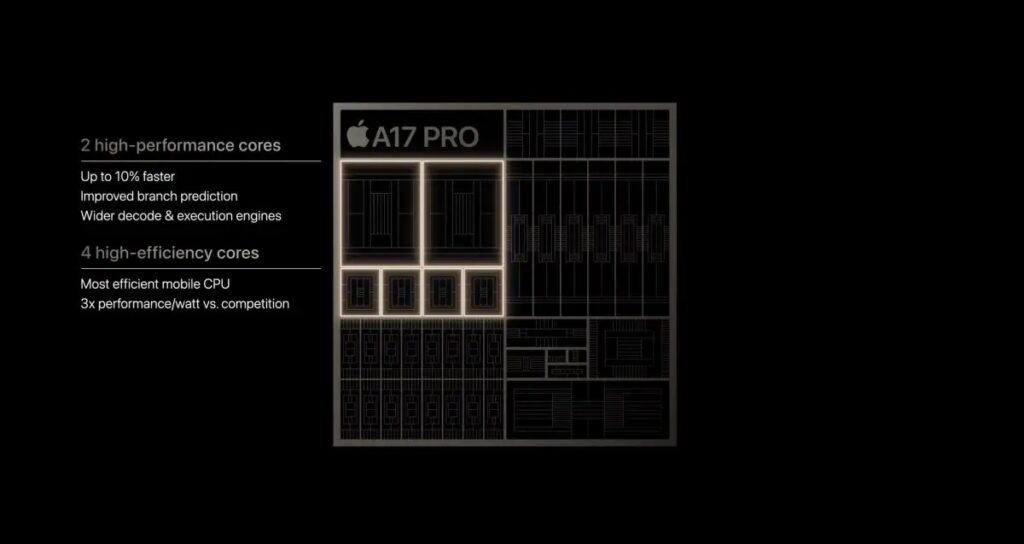
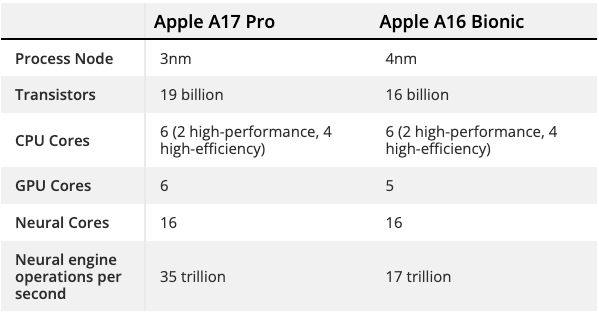
Qualcomm CEO, Cristiano Amon has recently been discussing the potential of on-device AI and how it could revolutionize the mobile phone industry. Amon emphasized that AI is not just a talking point for Qualcomm. However, he claims that AI may bring some major advancements to mobile phones. On-device AI refers to the use of AI algorithms and models that are processed locally on a device. This is different from models that are sent to a remote server for processing. This means that the device can perform AI tasks without needing to be connected to the internet. On-device AI has the potential to improve the performance and efficiency of mobile devices. It could also enhance user privacy and security. (GizChina, IT Home, Qualcomm, CNBC, PYMNTS)
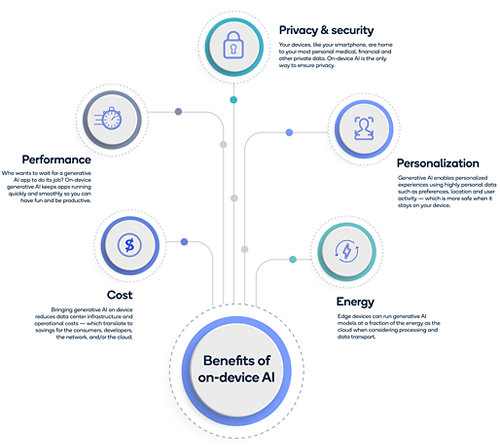
MediaTek has launched Dimensity 7200 Ultra. It is an octa-core processor equipped with 2x Cortex A715 cores clocked at 2.8GHz, and 6x Cortex 510 cores clocked at 2.0GHz. It comes with ARM Mali-G610 GPU for graphics, and the processor can support up to LPDDR5 RAM. It supports up to 200MP cameras, 4K video recording at 30fps, and FHD+ display with a maximum of 144Hz refresh rate. With this processor you also get a 5G modem, and the 5th gen MediaTek APU 650 for AI processing. Redmi Note 13 Pro+ will launch with the Dimensity 7200 Ultra. It also highlighted the 200Mp camera with a Samsung ISOCELL sensor for the Redmi Note 13 Pro+. (Gizmo China, MediaTek, Sparrows News, 91Mobiles)
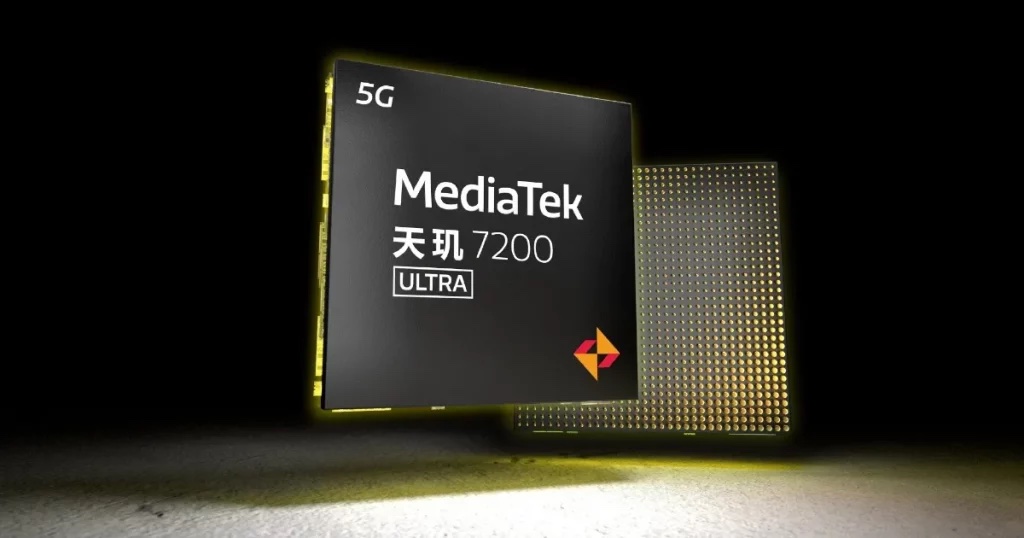
Intel Foundry and Tower Semiconductor have agreed on collaboration, as both companies previously exited from a USD5.4B deal, citing regulator concerns. Intel has announced that they plan to expand cooperation within wafer equipment exchange. Intel has revealed that it will supply 65nm power management BCD chips manufactured at Intel’s Fab 11X facility in Rio Rancho, New Mexico. Tower will financially aid the process, investing USD300M into the New Mexico fab, which will help Intel meet the expected demand for 300mm advanced analog processing. Intel is expected to supply 600,000 photo layers per month to meet Tower’s demand, and this amount could vary based on industry circumstances.(TechCrunch, Intel, WCCFTech)
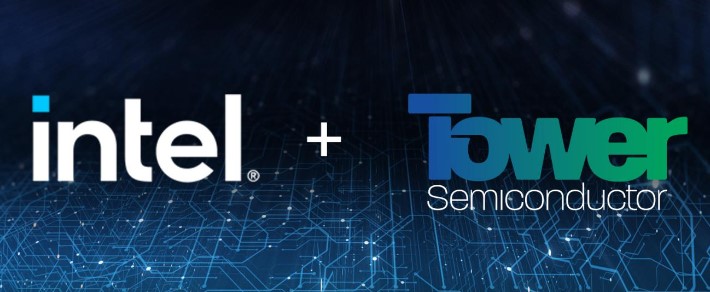

OPPO and Sony’s Lytia imaging sensor brand have announced a new strategic partnership that will bring dual-layer stacked Sony sensors to future OPPO flagships. OPPO promises the new sensors will “unlock the next era of computational photography”. Sony’s ExmorT IMX888 stacked CMOS sensor with 2-layer transistor pixel technology. Sony is bringing two more sensors using the stacked CMOS sensor design – the IMX903 and IMX907. The key point is that the transistors and photodiode layers are separated, allowing for physically larger diodes, more light capture and better low-light performance.(CN Beta, Sina, GSM Arena, Weibo)
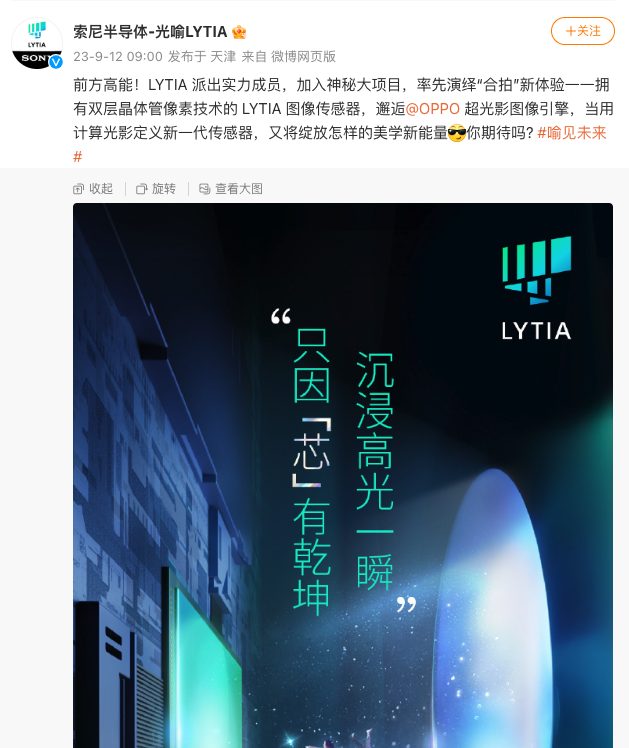

BMW Group, Ford Motor and American Honda Motor have announced deal to create ChargeScape, an equally-owned company that will create a single, cost-effective platform connecting electric utilities, automakers and EV customers. The companies claim that ChargeScape will benefit both EV customers and the electric utility industry in the U.S. and Canada, asi it wil “unlock entirely new value that EVs can provide to the electric grid, while enabling EV customers to earn financial benefits through a variety of managed charging and energy-sharing services never before possible with traditional gasoline-powered vehicles”. (CN Beta, PR Newswire, The Verge, Nasdaq)
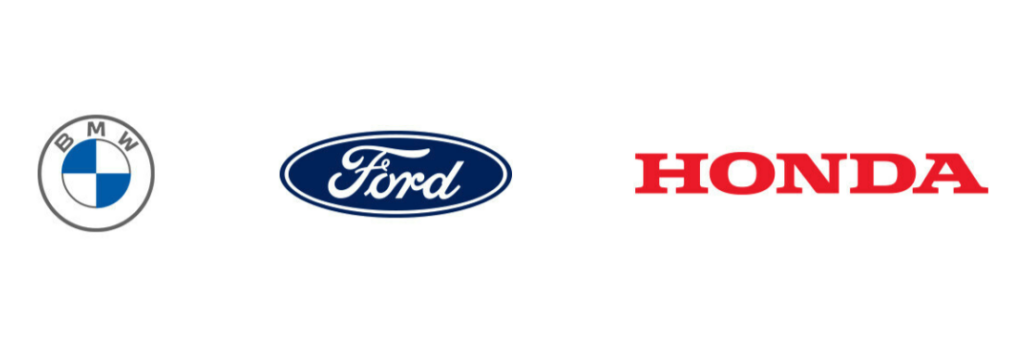
OPPO may announce a battery replacement initiative that will provide free battery replacements within a 4-year timeframe. The first model to benefit from this program will be the upcoming OPPO A2 Pro 5G. If the battery’s health falls below 80% within 4 years, it will be eligible for replacement under the after-sales service, a notable extension compared to the typical 1- to 2-year warranty offered in the industry. (Gizmo China, Weibo, My Drivers, IT Home)
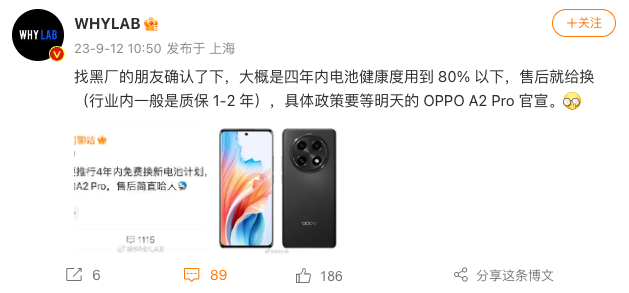
Honda Motor has announced that it has reached an agreement with Tesla to adopt Tesla’s North American Charging Standard (NACS) for the charging port of its EV models that will go on sale in North America starting from 2025. In 2025, Honda is planning to launch a new EV model in North America equipped with a NACS port. From that point forward, Honda will continue adopting NACS standards for its models. EV models the company will launch in North America before 2025, which will be equipped with a Combined Charging System (CCS) port, are also being developed to be compatible with the NACS through the use of a charging adaptor.(TechCrunch, Honda)
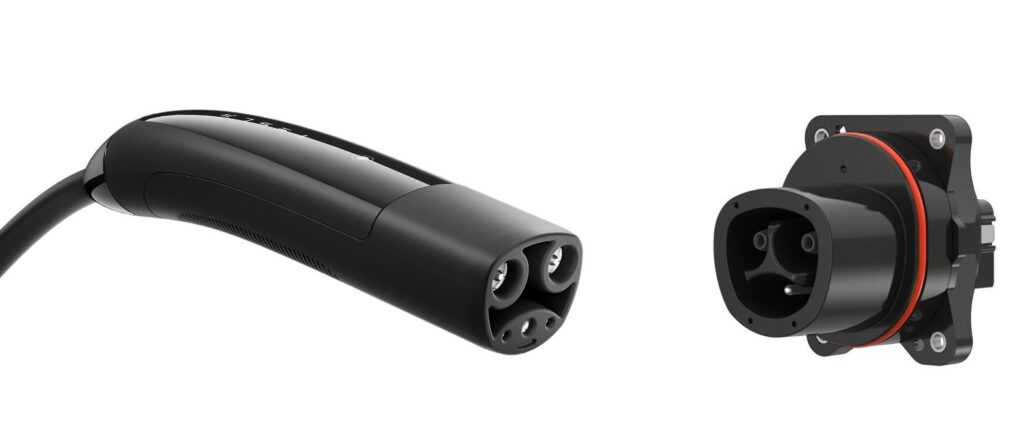

Intel has announced Thunderbolt 5, the next generation of Thunderbolt. Thunderbolt 5 will deliver 80 gigabits per second (Gbps) of bi-directional bandwidth, and with Bandwidth Boost it will provide up to 120 Gbps for the best display experience. All of that bandwidth will allow for three 4K 144Hz screens running simultaneously, multiple 8K displays, or a single monitor at up to a ridiculous 540Hz. With up to 240W of possible charging, Thunderbolt 5 would allow even gaming laptops to ditch the proprietary chargers and just use USB-C. (GSM Arena, Intel, XDA-Developers)
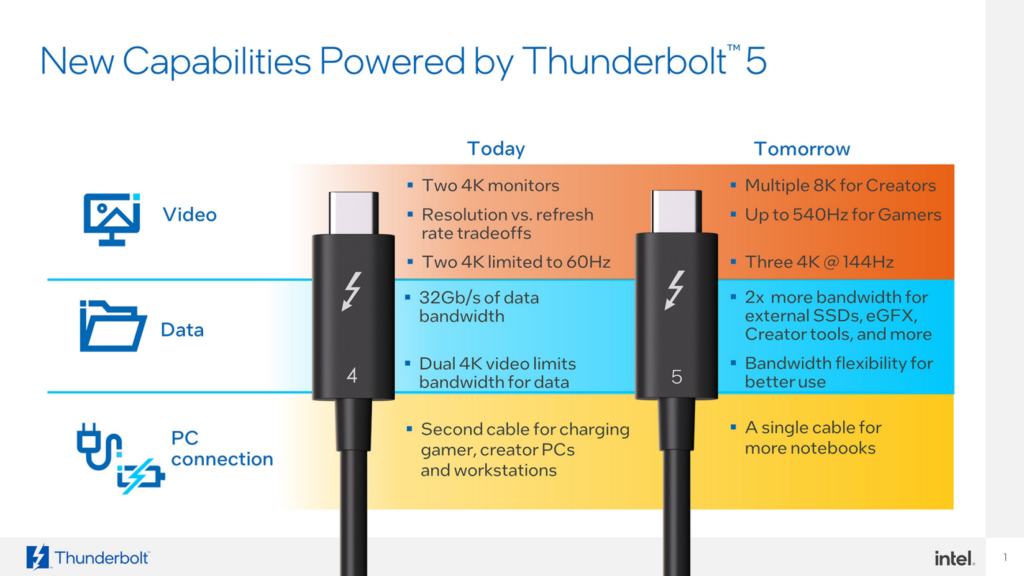

Apple has officially discontinued its compact phone line after dropping the iPhone 13 mini. Apple released mini versions of the iPhone 12 and iPhone 13, but it was noticeably missing from the iPhone 14 lineup in 2022.(Android Authority, GSM Arena, The Verge)
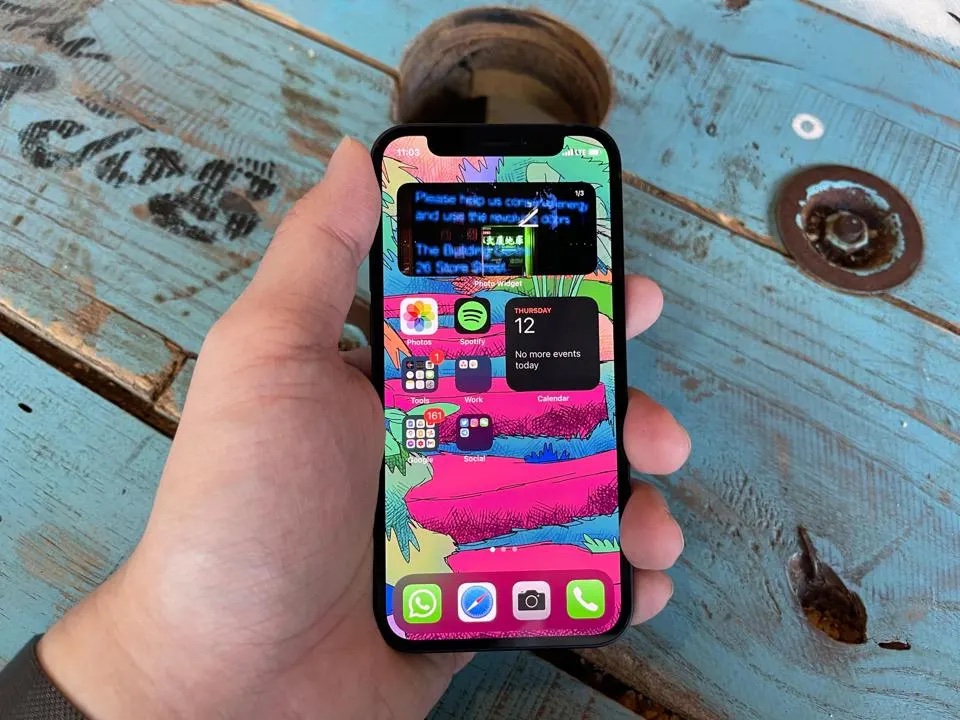
Apple may be planning to discontinue its silicone rubber and fluoroelastomer accessories, replacing them with ones made of more eco-friendly next-generation materials. The move is expected to include accessories such as the iPhone Silicone Case with MagSafe, Sport Band, Solo Loop, and AirTag Loop.(Apple Insider, MacRumors)
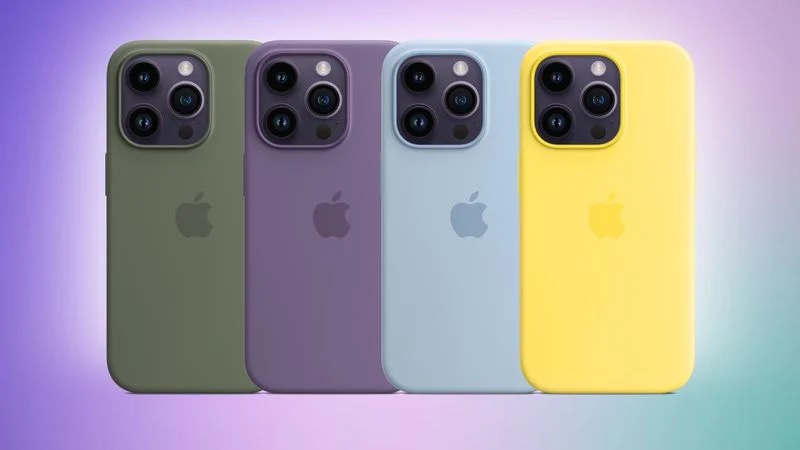
Apple will phase out all plastic packaging by the end of 2024, and the slow removal of leather products. By 2030, Apple aims to reduce the climate impact from devices to a net-zero impact. Crucial metals used in construction, like aluminum, cobalt, and gold, now come from recycled sources. Starting today, Apple will no longer use leather in any materials. Instead, users can use FineWoven, which comes from recycled materials and sports several colors while remaining stylish. The recycled materials grace the new Apple Watch Ultra 2, which no longer uses 100% virgin titanium. Now, more than 95% of the case comes from recycled materials.(Apple Insider, Market Watch)
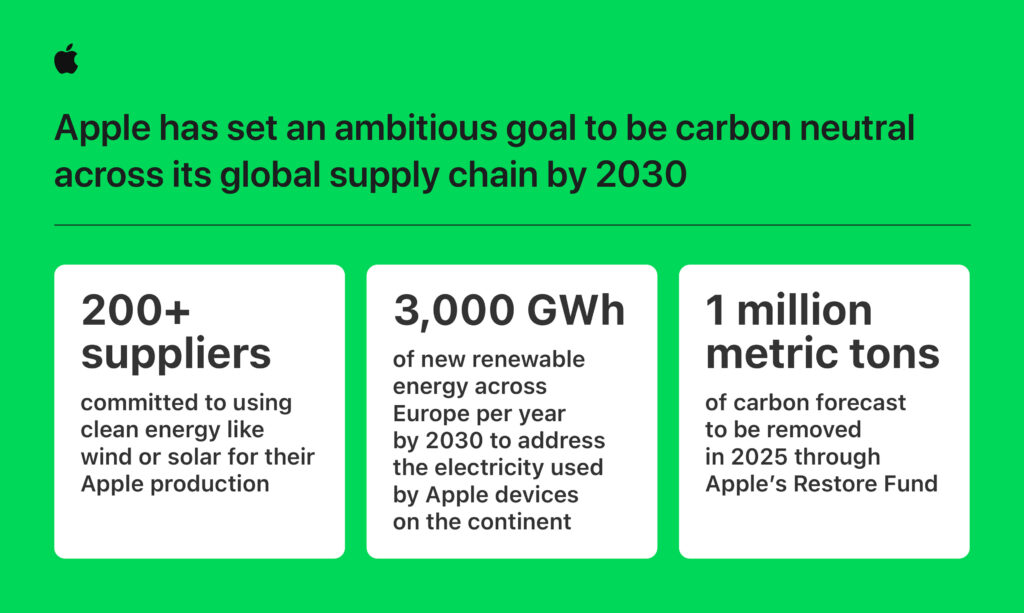
HMD Global’s CEO Jean-Francois Baril has announced that the company is establishing an original HMD brand. This HMD brand will coexist alongside Nokia devices and “collaboration with exciting new partners”. He also highlights that HMD Global exclusively held the license to the Nokia phone brand for six years. The company is also proud of its sustainability, repairability, and digital detox efforts. (Android Headlines, Linkedin, Android Authority)
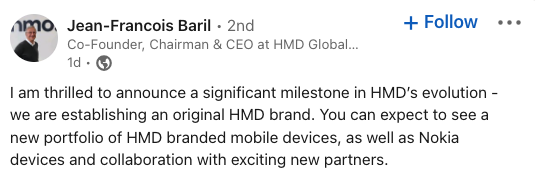
Huawei has launched three Mate 60 phones, all of them with 5G support. Multiple sources from China now claim this is the first step of a new offensive to the global smartphone market. Huawei allegedly lays foundations with the domestic market in China and continue its overseas expansion, but an exact timeline is currently unavailable. Huawei already increased its yearly production forecast from 30M in Jan to 38M in Sept 2023. Of them, 20M units have already been shipped, and the Mate 60 Pro units will account for 6M more or a third of the remaining orders.(GizChina, IT Home, GSM Arena)
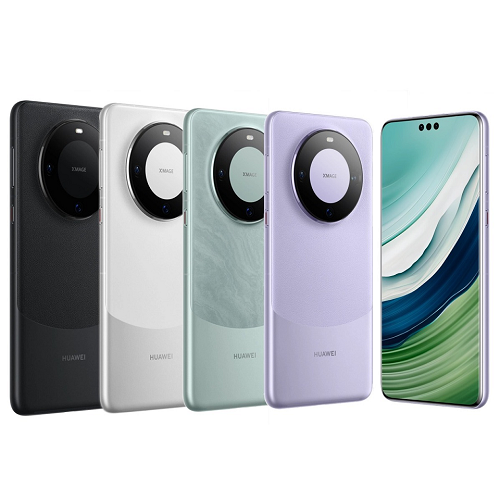
Apple has protested poor handling of secret data — presumably about how much Google pays the company to stay iPhone’s default search engine. The U.S. government is investigating Google for abusing its power as a search giant, led by Judge Amit Mehta. Key executives from Apple play a key role in this investigation due to the financial deals between Google and Apple around search. Unspecified secret information was shared during the public opening statements, and Apple has filed a confidentiality protest. It seems Justice Department attorney Kenneth Dintzer shared data in the public call that Apple and Google believe to be part of the confidential trade secrets meant to be protected by the trial’s proceedings.(Apple Insider, Reuters, CN Beta, Washington Post)
Huawei and Xiaomi have announced they reached a global patent cross-licensing agreement that covers multiple communications technologies including 5G. Huawei had sued Xiaomi for alleged infringement of four patents. These patents were about smartphone photography, wireless communication technology, and screen lock technology.(GizChina, Gizmo China, Huawei, IT Home)

Samsung Galaxy Ring is reportedly to be launched with Galaxy S24 in Jan 2024. Samsung is reportedly ready to start mass production, but things are moving slowly due to the extra regulatory clearances needed for a health-tracking product. The Ring is expected to synthesize the health-focused features of the Galaxy Watches while dropping the most of the smartwatch features. (Android Authority, GSM Arena, Weibo, Sohu, iFeng)


Samsung is developing a new high-end extended reality (XR) headset with Google and Qualcomm. A leaked image is showing tracking RGB cameras and a depth sensor. A new rumor suggests the device will enable users to smell virtual environments and objects. The Samsung XR headset will display an ultra-high 3,000 ppi pixel density. it is said to support hand tracking. The leaker claims the XR headset will incorporate smell in some capacity. It is said to support hand tracking and will incorporate smell in some capacity.(Neowin, Twitter)
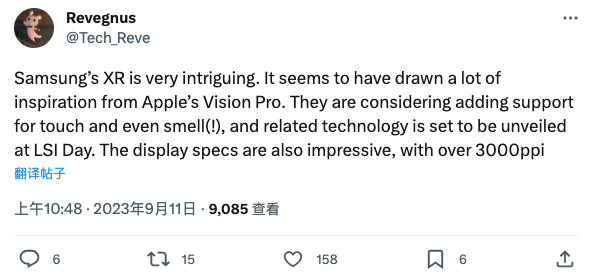

Tesla and its suppliers will reportedly invest USD15B over the next 2years in the Gigafactory Mexico facility, said Nuevo Leon state governor Samuel Garcia. Tesla has not announced a start date for construction of its Gigafactory Mexico or when it will start producing vehicles. Tesla has allegedly planned to begin manufacturing EVs in Mexico in 2025. Tesla’s decision to invest more than initially planned raises questions about the company’s long-term strategy for its Mexican facility. The increase comes after a recent announcement by Tesla to shift the initial build location for its next-generation electric vehicles from Mexico to Austin, Texas. (Gizmo China, Inside EVs)
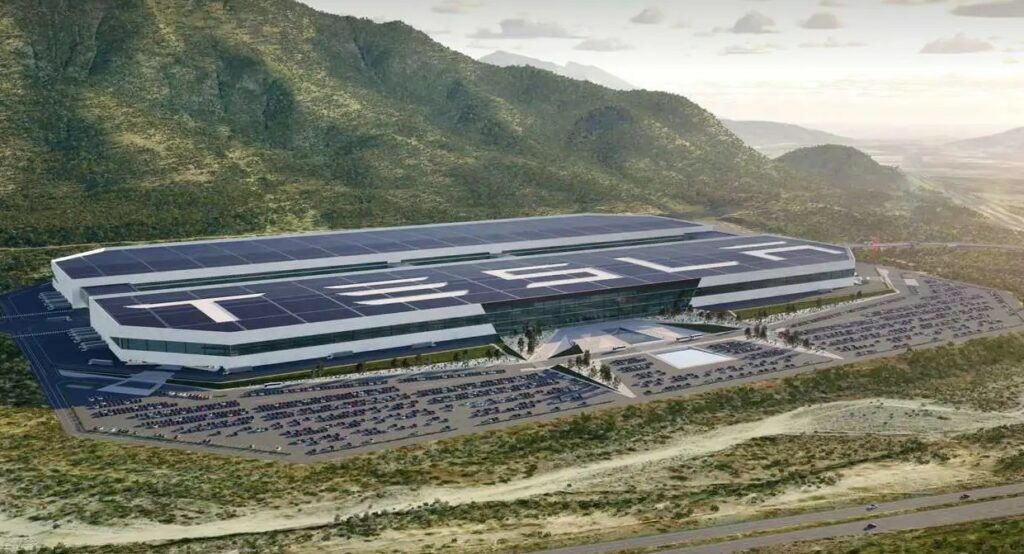
According to India’s Commerce Minister Piyush Goyal, Tesla plans to source components worth USD1.7-1.9B from India and has already sourced parts worth USD1B. Tesla’s senior executives have met the minister with an interest in building a factory in India that would produce a low-cost electric vehicle (EV) priced at USD24,000, around 25% cheaper than Tesla’s current entry-level model. The minister also said that the government may have to take retaliatory action against countries that do not allow access to Indian steel companies but are permitted to send the metal to India. (TechCrunch, Live Mint, Bloomberg, Economic Times)
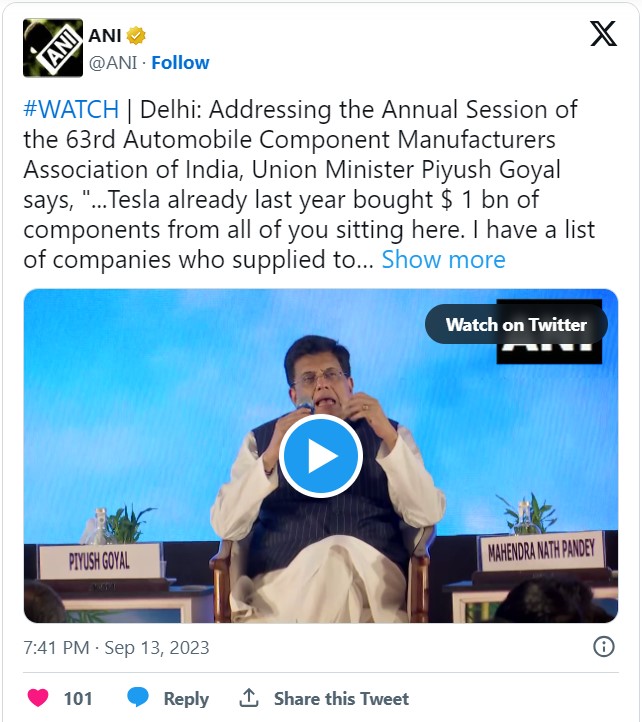
Brussels will launch an anti-subsidy investigation into Chinese electric vehicles that are “distorting” the EU market, a probe that could constitute one of the largest trade cases launched given the scale of the market. European Commission president Ursula von der Leyen has announced the probe. Action against Chinese carmakers in Europe has been demanded by some member states, notably France, concerned that major domestic carmakers risk losing their leadership as the green transition reshapes the market. Many of Europe’s largest carmakers have raised the alarm on Chinese imports, saying lower energy and labour costs give them an advantage over European models. (GizChina, IT Home, CNBC, Financial Times)
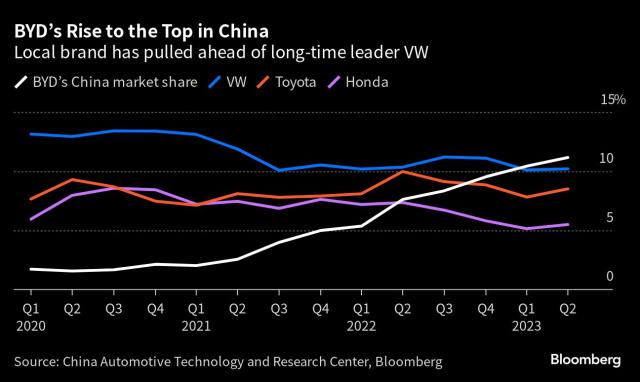

The US White House has announced that 8 more tech companies, in addition to Amazon, Anthropic, Google, Inflection, Meta, Microsoft, and OpenAI have volunteered to work on AI risks. Adobe, IBM, Nvidia, Palantir, Stability, Salesforce, Scale, and Cohere joined existing signatories to principles put forward by President Biden. The commitments require signatory companies to take steps like watermarking or labeling AI-generated media so that people know a human didn’t create it. The AI companies also commit to promoting fairness, non-discrimination, transparency, privacy, and security when working with AI. White House chief of staff Jeff Zients praised the additional companies for joining the effort, saying Biden has made harnessing AI’s benefits while managing its risks a top priority. (Neowin, CN Beta, White House)

TikTok has launched its e-commerce product, TikTok Shop, in the U.S., where it has more than 150M users. As part of the rollout, the company is bringing features such as a dedicated shop tab on the home screen, live video shopping, shoppable ads and affiliate programs for creators. TikTok has been testing its e-commerce initiative in the U.S. since last November. Over the course of the last few months, the company has added more vendors to the test. ByteDance has been experimenting with different formats of shopping in various markets, such as the U.K. and many Southeast Asian countries.(TechCrunch, TikTok)
